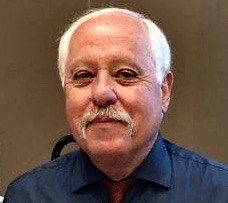 (Editor's Note: This article is reprised from a previous GonzoPR post and celebrates my new coffee table picture book titled "Aye, Chiwawa: Wilderness Photography" published in January, 2025.)
(Editor's Note: This article is reprised from a previous GonzoPR post and celebrates my new coffee table picture book titled "Aye, Chiwawa: Wilderness Photography" published in January, 2025.)The Chiwawa River (above and below) flows into the Wenatchee River below our property in Shugart Flats near Plain in the North Cascades of Washington. So it was only fitting that friend and frequent climbing companion Steve Still and I explore the headwaters of the Chiwawa in the Glacier Peak Wilderness during the week of August 11-18.
 Because it resides in a low valley scoured by Ice Age glaciers, the Chiwawa River is a delightfully meandering stream that provides a white sandy beach at the base of our property where our kids would frolic in the hot summer sun where the Chiwawa joins the Wenatchee River on its way to the Columbia River in Wenatchee.
Because it resides in a low valley scoured by Ice Age glaciers, the Chiwawa River is a delightfully meandering stream that provides a white sandy beach at the base of our property where our kids would frolic in the hot summer sun where the Chiwawa joins the Wenatchee River on its way to the Columbia River in Wenatchee.
 Back before we had kids, Rebecca was the Rock Creek Prevention Guard, patrolling campgrounds in the Chiwawa Valley, while I was the wilderness ranger for the Chiwawa and Napeequa drainages.
Back before we had kids, Rebecca was the Rock Creek Prevention Guard, patrolling campgrounds in the Chiwawa Valley, while I was the wilderness ranger for the Chiwawa and Napeequa drainages.
 After quietly pouring out lava for most of its long existence, Glacier Peak burst into violent activity about 12,000 years ago, expelling immense quantities of ash and smoke.
After quietly pouring out lava for most of its long existence, Glacier Peak burst into violent activity about 12,000 years ago, expelling immense quantities of ash and smoke.
The river, which takes its name from the Native American (probably Wenatchi, but possibly Salish) expression for "last canyon next to the mountains," has a low valley -- 2,000-3,000 feet -- and is surrounded by 6,000- to 9,000-foot peaks in the Glacier Peak Wilderness.
 Because it resides in a low valley scoured by Ice Age glaciers, the Chiwawa River is a delightfully meandering stream that provides a white sandy beach at the base of our property where our kids would frolic in the hot summer sun where the Chiwawa joins the Wenatchee River on its way to the Columbia River in Wenatchee.
Because it resides in a low valley scoured by Ice Age glaciers, the Chiwawa River is a delightfully meandering stream that provides a white sandy beach at the base of our property where our kids would frolic in the hot summer sun where the Chiwawa joins the Wenatchee River on its way to the Columbia River in Wenatchee. Back before we had kids, Rebecca was the Rock Creek Prevention Guard, patrolling campgrounds in the Chiwawa Valley, while I was the wilderness ranger for the Chiwawa and Napeequa drainages.
Back before we had kids, Rebecca was the Rock Creek Prevention Guard, patrolling campgrounds in the Chiwawa Valley, while I was the wilderness ranger for the Chiwawa and Napeequa drainages.As the eyes and ears of the U.S. Forest Service up the Chiwawa River, we were based at the Rock Creek Guard Station about halfway up the valley on the way to the road's terminus at the old Trinity mine.
Glacier Peak (below), known to the natives as Dakobed, or White Goddess, is the most remote and inaccessible volcano in the Cascade Range. The broad massif looms large over other significant peaks in a vast wilderness that covers over a half-million acres.
With deep valleys carved by glaciers, forbidding cliffs and ominous ramparts of ice, the Glacier Peak Wilderness is only a place for those who are willing to brave its precipitous trails and high routes.
 After quietly pouring out lava for most of its long existence, Glacier Peak burst into violent activity about 12,000 years ago, expelling immense quantities of ash and smoke.
After quietly pouring out lava for most of its long existence, Glacier Peak burst into violent activity about 12,000 years ago, expelling immense quantities of ash and smoke.Prevailing winds carried the ash hundreds of miles to the east as far away as Montana and Alberta, Canada. In the post-glacial period in the U.S., only Mt. Mazama (Crater Lake) covered a larger territory.
And so it was on Thursday, August 11, Steve and I departed for Owl Farm to prepare for our wilderness sojourn.


No comments:
Post a Comment